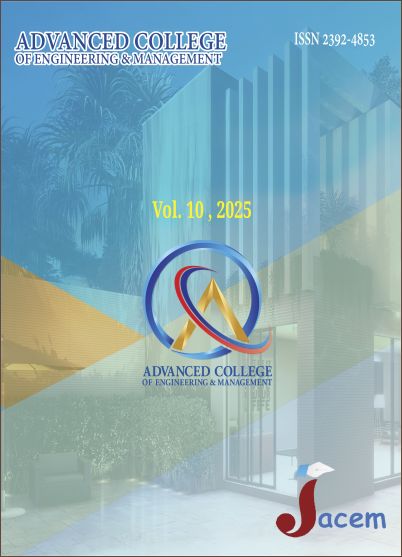A Review Paper on Floating Treatment Wetlands: Working Principles and Applications for River Water Remediation
DOI:
https://doi.org/10.3126/jacem.v10i1.76316Keywords:
Floating Treatment Wetland, River Water, Macrophytes, Nutrient Removal, Heavy MetalAbstract
As the world grapples with water scarcity, Floating Treatment Wetlands (FTWs) offer a beacon of hope for sustainable water management. These innovative systems redefine wastewater treatment by utilizing emergent plants on floating mats. FTWs act as biofilters, removing pollutants through a multi-pronged approach: direct plant uptake, microbial breakdown by root-associated biofilms, and sedimentation. Notably cost-effective and requiring no extra land as they can fit in existing water source, FTWs are well-suited for diverse water sources, including secondary effluents, stormwater, and even polluted rivers. Their ability to function in rivers without disrupting existing ecosystems makes them particularly promising for in-situ river water remediation, offering a green solution to restoring vital waterways. The (FTW) effectively addresses technical and operational issues in river water treatment by adjusting to varying water levels and varied flows through its revolutionary buoyant hydroponic design, which depends on integral components such as plants and biofilms anchored beneath the floating mat. The idea of FTWs, their structural layouts, their applicability to river water, and the processes of plant absorption for pollution removal are all covered in this paper. It examines FTWs function in extracting nutrients, heavy metals and new emerging pollutants seriously. The review also emphasizes the significance of vegetation covering, vegetation type, water depth and seasonal variation in improving system performance since an understanding of the hydraulics and other aspects of FTWs is essential for good design.
Downloads
Downloads
Published
How to Cite
Issue
Section
License
JACEM reserves the copyright for the published papers. Author will have right to use content of the published paper in part or in full for their own work.




